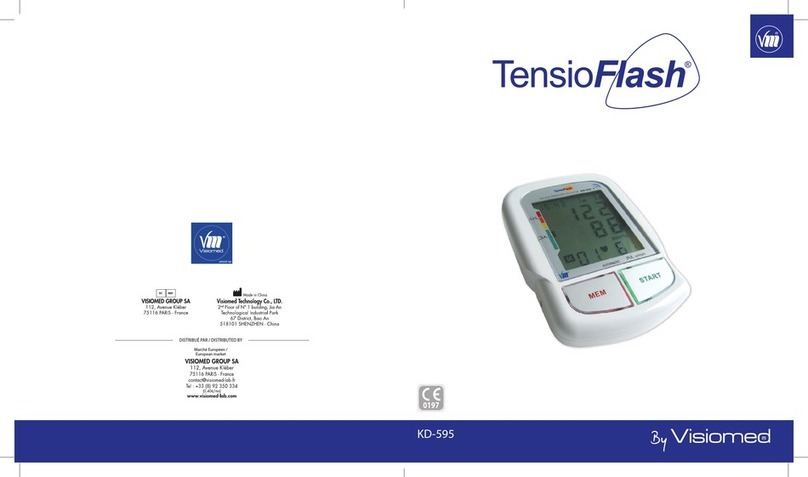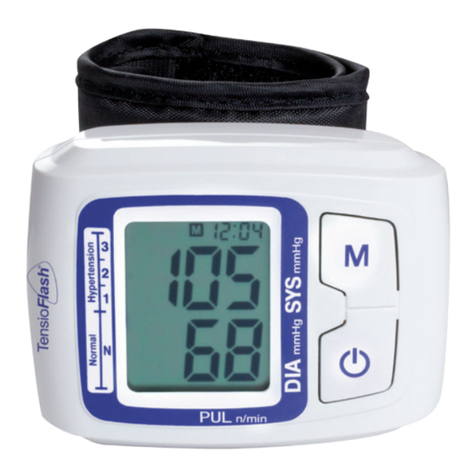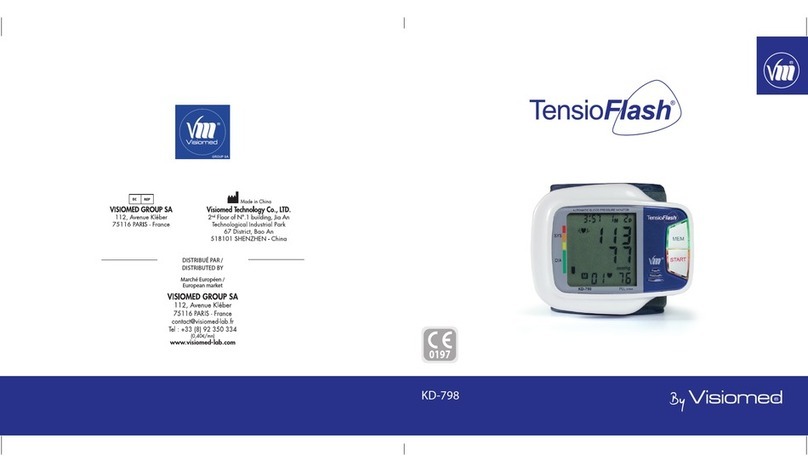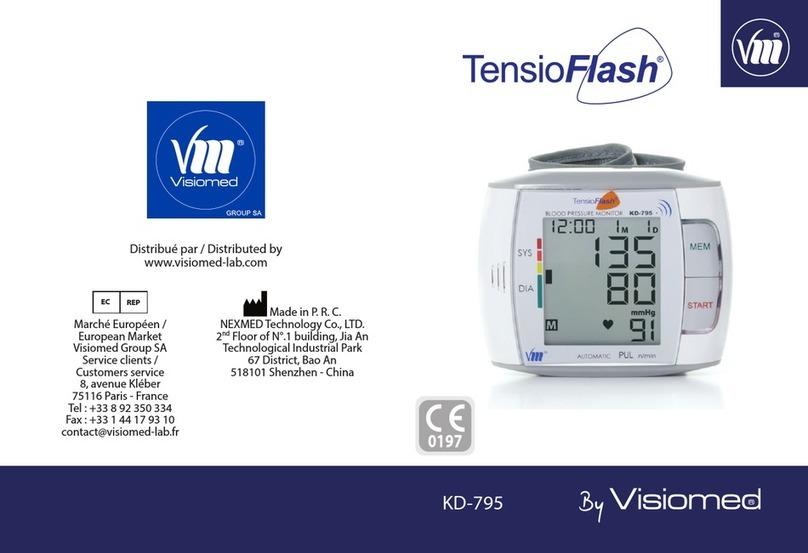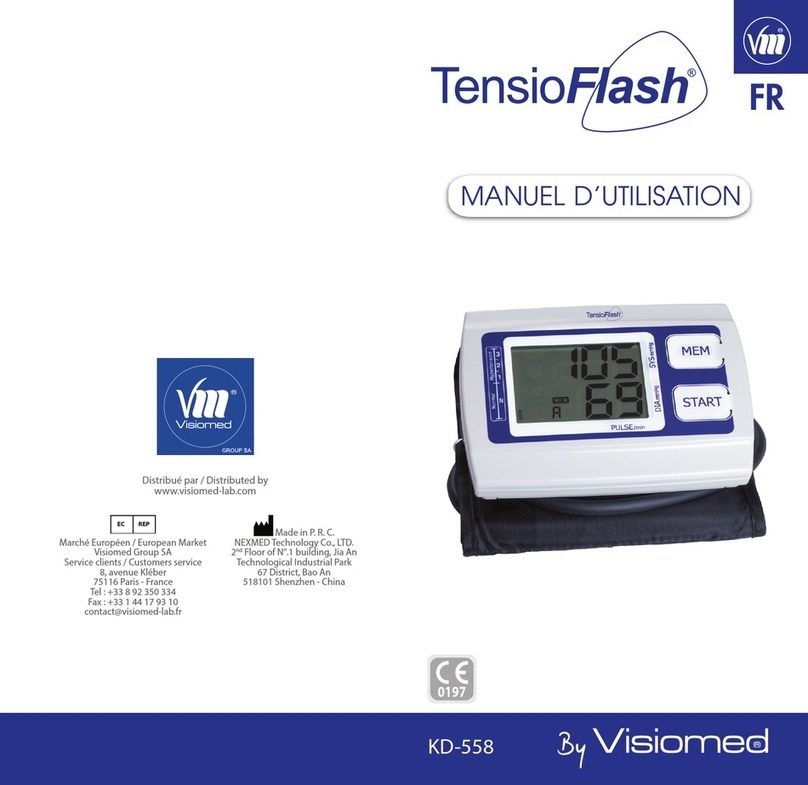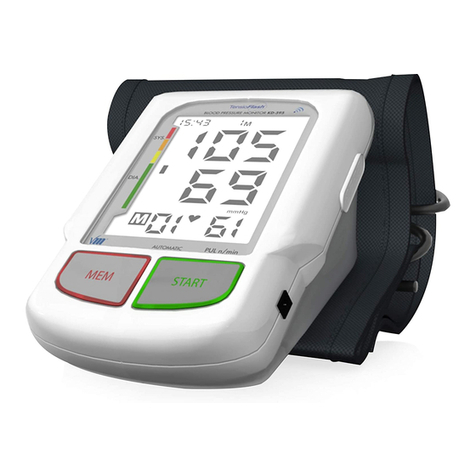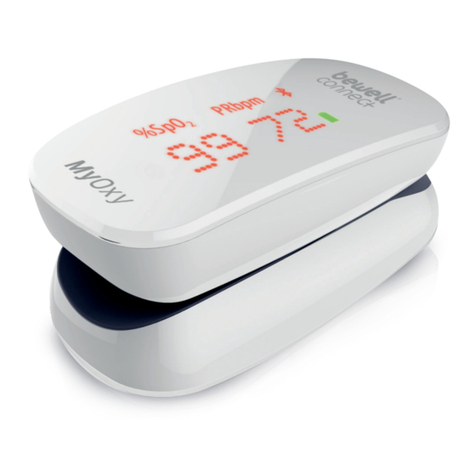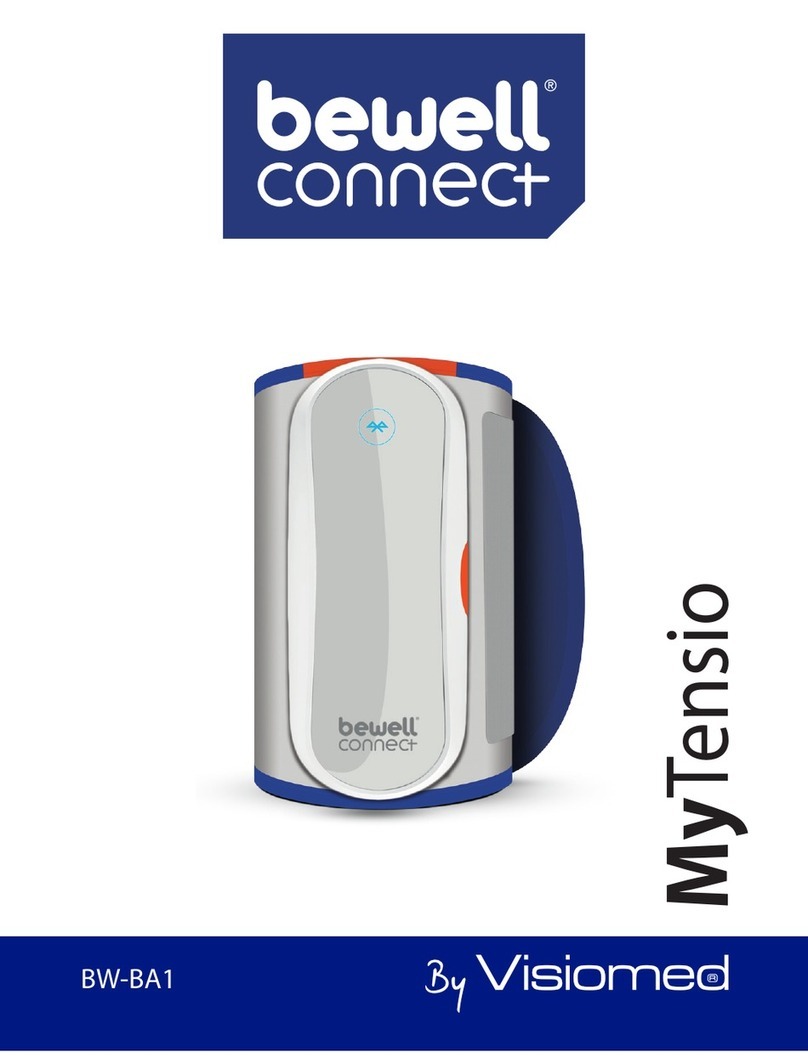
12 13
Visiomed - KD-795 - Manuel d’utilisation - 022019 Visiomed - KD-795 - Manuel d’utilisation - 022019
11. MESURE DE LA TENSION ARTÉRIELLE
1. Appuyez sur la touche START. Toutes les icônes s’affichent à l’écran.
2. L’appareil affiche «zero» à l’écran lorsque l’appareil est prêt à prendre la mesure. Le bracelet se
gonfle automatiquement. Lorsque l’écran affiche la valeur maximale la pression se relâche, les
battements de cœur sont captés. L’air est automatiquement évacué du bracelet.
3. Une fois la mesure prise, l’écran affiche les valeurs systolique, diastolique puis les pulsations/
minute.
4. Les données sont mémorisées automatiquement.
5. Appuyez de nouveau sur START pour éteindre l’unité. En cas d’oubli, l’unité s’arrête
automatiquement après environ 1 minute.
6. Si la pression du bracelet est trop importante ou que vous vous sentez mal à l’aise, appuyez
immédiatement sur la touche START pour dégonfler le bracelet.
Notes :
- La valeur mesurée sera trop faible si le bracelet est maintenu au-dessus du niveau du cœur, et trop élevée
s’il est maintenu au-dessous du niveau du cœur.
- L’appareil mémorise les 2x30 dernières prises de tension. Au-delà de 2x30 mesures, les données les plus
anciennes seront effacées.
- Evitez de parler et de bouger durant la prise de tension, cela affecterait les résultats.
- Si vous souhaitez stopper la mesure au cours d’une prise de tension, appuyez sur la touche START pour
arrêter l’appareil.
- Consultez votre médecin en cas de doute sur l’utilisation du tensiomètre.
12. MÉMORISATION DES DONNÉES
1. Appuyez sur la touche MEM pour afficher les résultats enregistrés. L’appareil affiche le nombre de
mesures enregistrées. Si il n’y a pas de mesure, un « - » s’affiche.
2. L’écran affiche la dernière mesure. Appuyez sur la touche MEM pour revoir les données dans l’ordre
croissant. L’heure et la date sont mémorisées pour chaque prise de tension.
3. Pour effacer les données mémorisées, appuyez sur la touche MEM jusqu’à ce que 0 soit affiché à
l’écran.
4. Appuyez sur la touche START pour arrêter l’appareil.
13. ENTRETIEN DE L’APPAREIL
1. Utiliser un chiffon doux et sec pour nettoyer l’unité. Si nécessaire, utiliser
un chiffon légèrement humidifié avec de l’eau du robinet.
2. Ne pas utiliser d’alcool, de benzène, de diluant ou autre produit chimique,
pour nettoyer l’appareil ou le bracelet.
3. Avant toute utilisation, veuillez-vous laver les mains. Ne pas laver ou
mouiller le bracelet.
4. Evitez de placer l’unité en contact direct avec les rayons de soleil, une
humidité importante, ou de la poussière.
5. Pliez le bracelet de pression et rangez l’appareil dans sa boite.
Note : Si l’unité n’est pas utilisée durant une longue période, veillez à retirer les
piles (elles pourraient endommager l’appareil).
14. ÉVITER LES DYSFONCTIONNEMENTS
- Ne pas faire tomber l’appareil, éviter les secousses et les chocs.
- Ne rien insérer dans l’appareil.
- Ne pas démonter l’unité.
- Ne pas mettre l’appareil dans l’eau.
- L’appareil pourrait ne pas répondre à ses exigences de rendement s’il est stocké ou utilisé en dehors
des plages de température et d’humidité spécifiées dans les spécifications.
- L’appareil conserve ses caractéristiques de sécurité et performances pour un minimum de 10000
mesures ou trois ans d’utilisation.
